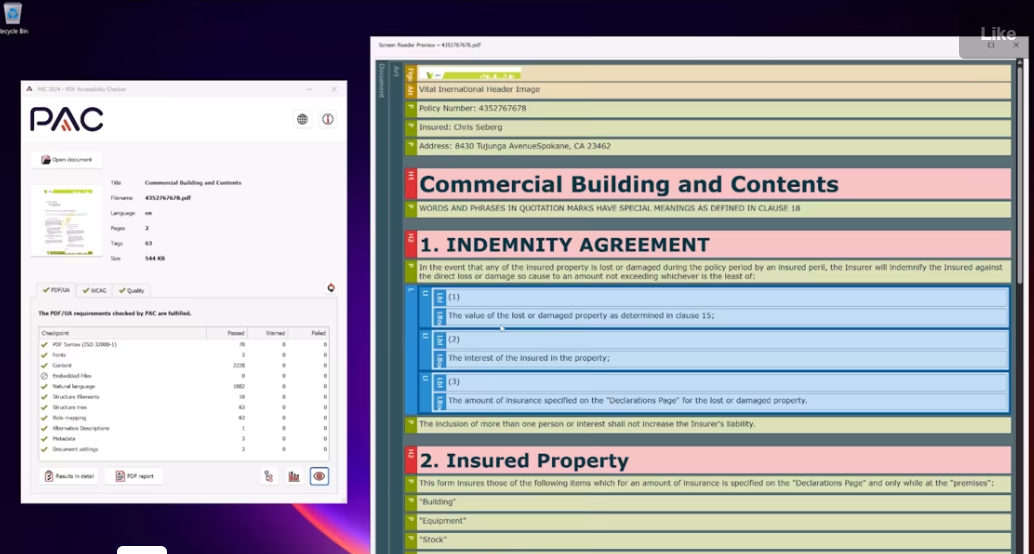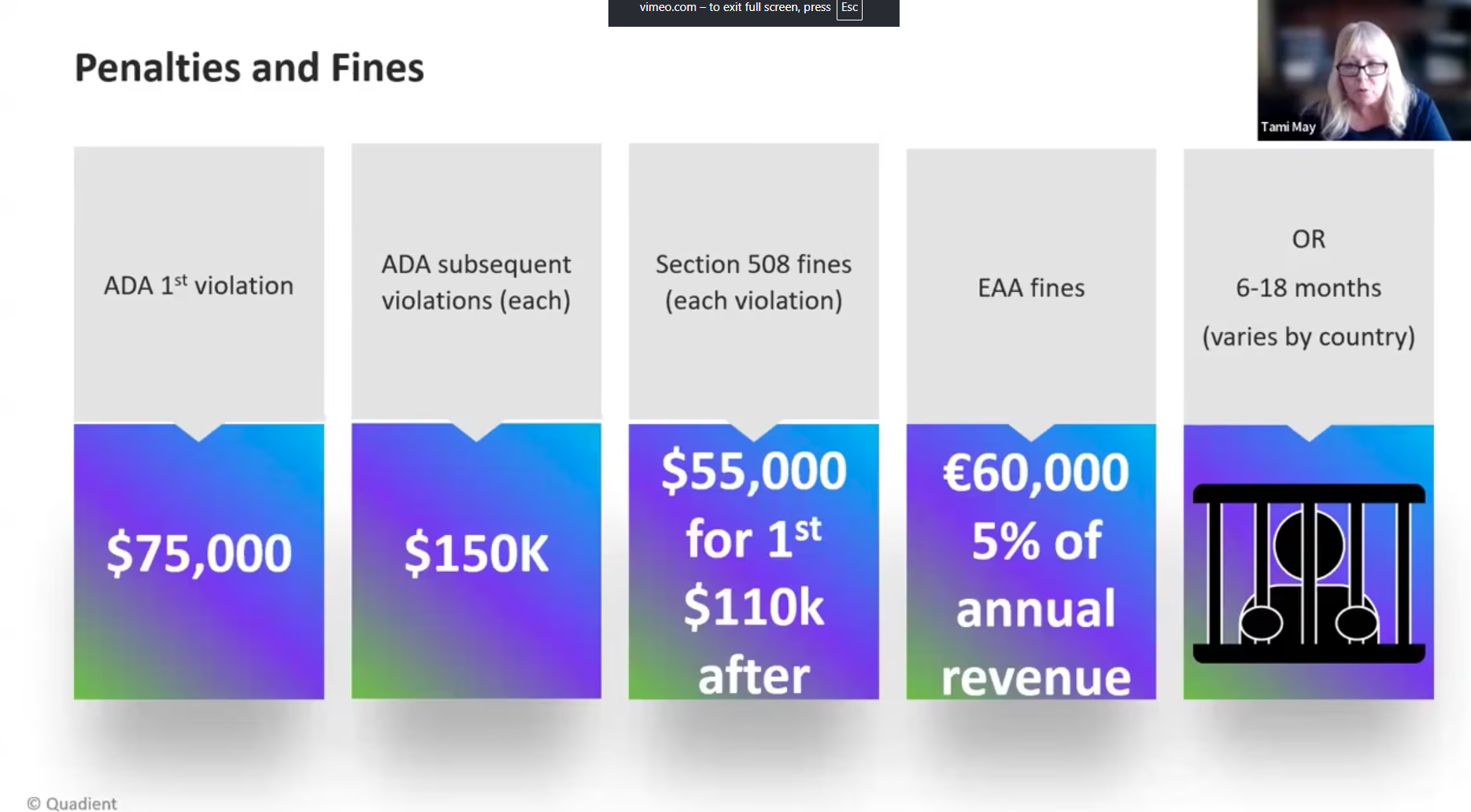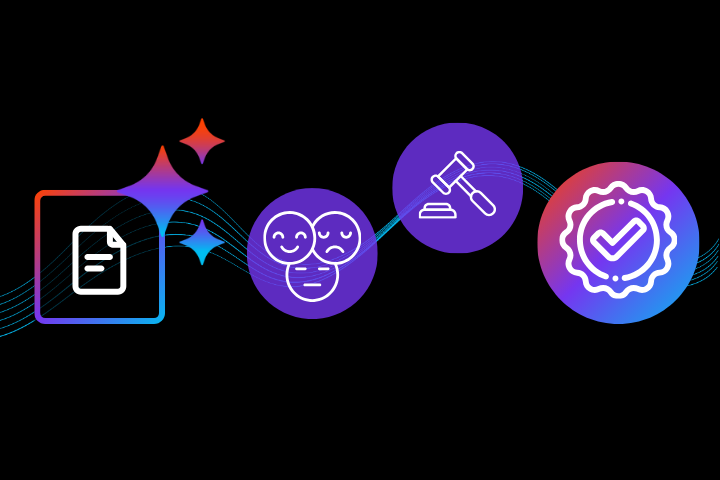Introduction
Customer success (CS) and customer experience (CX) play a crucial role for business-to-business (B2B) organizations as they navigate omnichannel strategies and complex customer journeys. Customer success teams help clients reach their goals, while CX programs shape how customers feel during every interaction. Aligning both functions improves customer satisfaction, retention, and engagement. Read on to learn how customer success and experience differ, where they overlap, and how technology and data bring them together to improve customer outcomes.
What is customer success?
Customer success is a proactive strategy that focuses on helping customers achieve their goals by utilizing your products or services. It makes the customer journey smoother by anticipating customer needs, reducing friction, and enhancing satisfaction. B2B organizations typically face longer sales cycles and complex systems. Structured customer success programs and tailored dashboards are essential for navigating these relationships.
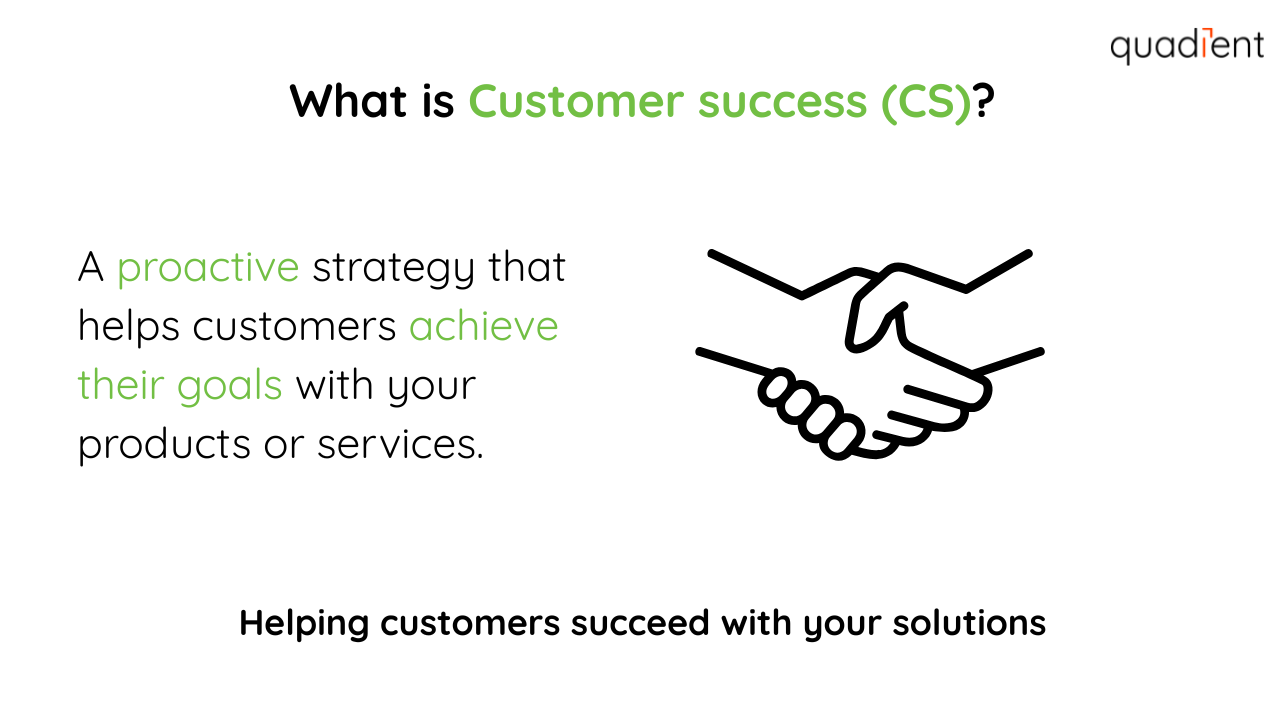
Success teams build long-term partnerships by leveraging customer data to monitor progress, provide targeted feedback, and deliver personalized support. Rather than reacting to issues, they rely on metrics such as Net Promoter Score (NPS), Customer Effort Score, and behavioral analysis to take action before problems arise and improve outcomes.
What is customer experience?
Customer experience encompasses every interaction a customer has with a brand, from website visits and mobile app usage to emails and contact center calls. A consistent omnichannel experience builds trust and loyalty, while inconsistent or fragmented touchpoints can erode confidence.
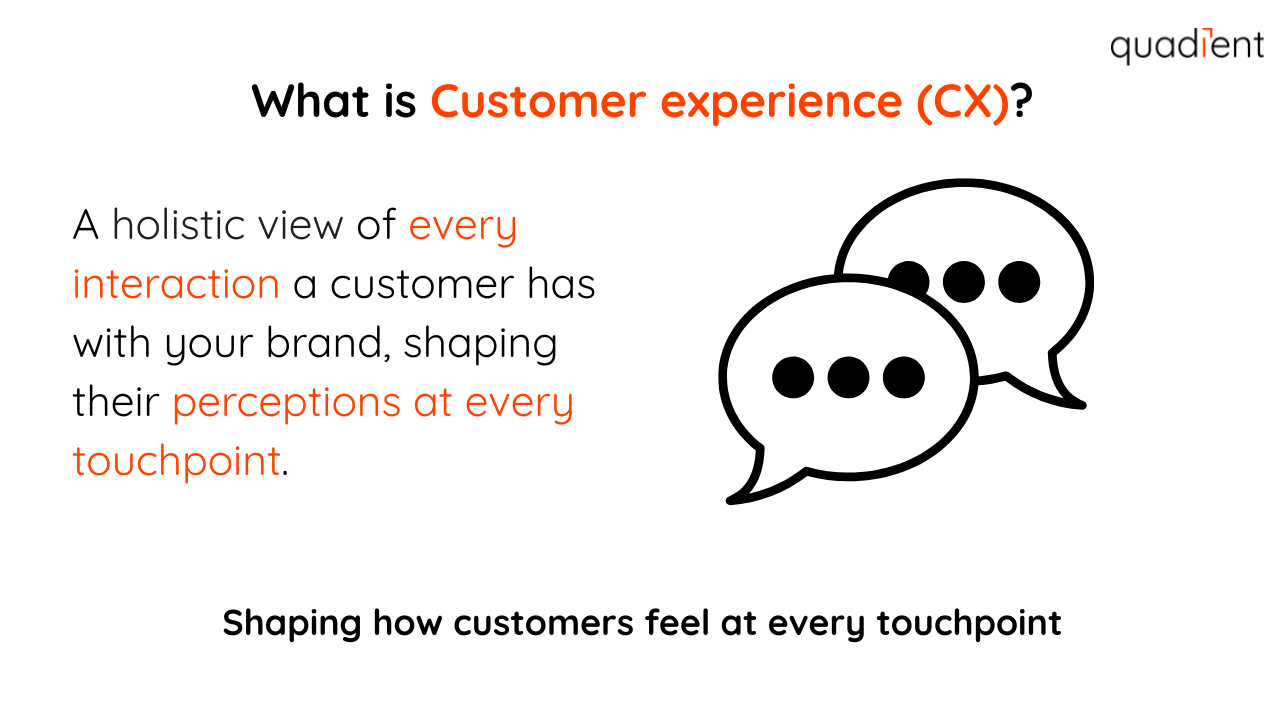
Cohesive customer communications shape brand perception across digital platforms. Whether through self-service tools or printed correspondence, every touchpoint contributes to the overall journey.
Comparing customer success and customer experience
Customer success and customer experience serve different, but equally important purposes in a B2B strategy. Customer success is focused on driving outcomes: helping clients realize the full value of your solution through proactive account management and goal tracking. CX, by contrast, is about how customers feel across every interaction, from digital channels to contact centers.
While CS is generally more strategic and long-term, CX is broader and often more immediate, touching everything from website design to invoice formatting.
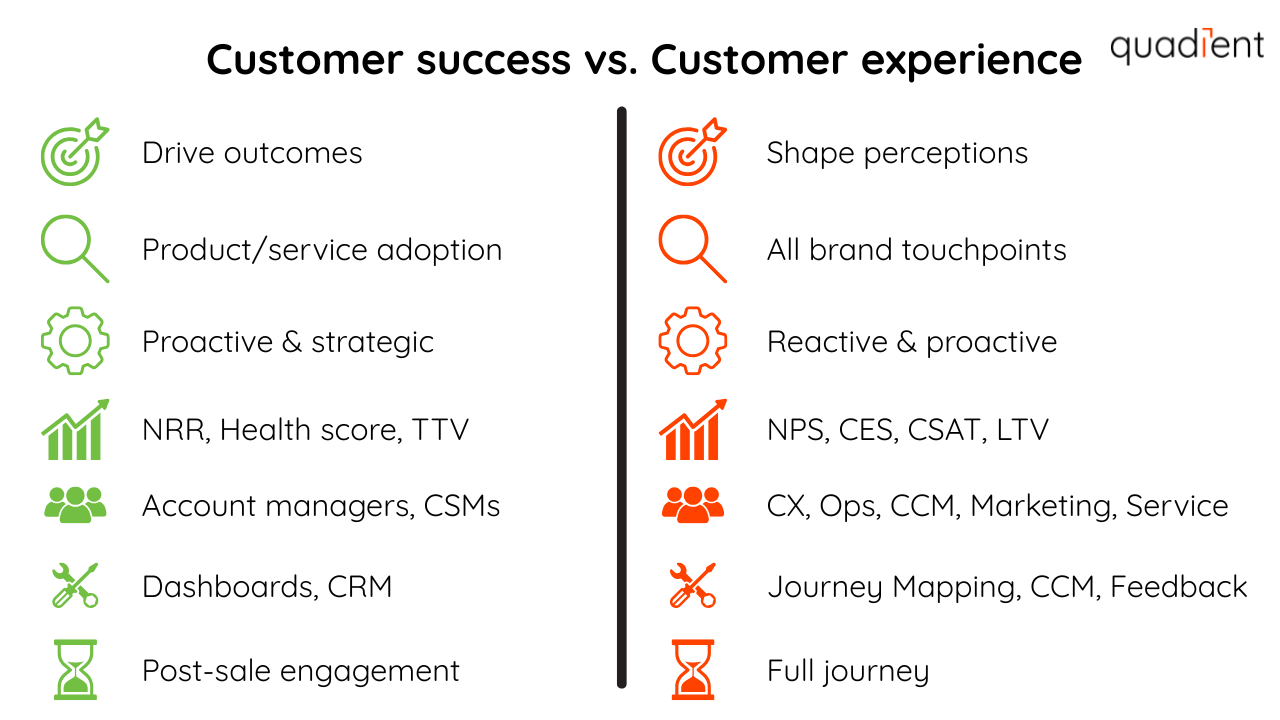
Customer Success (CS) | Customer Experience (CX) | |
Primary goal | Drive customer outcomes | Shape customer perceptions |
Focus area | Product/service adoption | All brand touchpoints |
Approach | Proactive and strategic | Reactive and proactive |
Typical metrics | Net Revenue Retention, Customer Health Score, Time-to-Value | NPS, CES, CSAT, sentiment analysis, churn rate, lifetime value, engagement time |
Key teams | Account management, CS managers | CX, operations, CCM, marketing, service teams |
Tools used | Dashboards, CRM, success platforms | Customer Journey Mapping, Intelligent Forms, Customer communication management (CCM), feedback tools, analytics platforms |
Customer stage | Post-sale engagement | Full journey (pre-and post-sale) |
The two overlap in areas like onboarding, retention, and feedback loops, and when aligned, they strengthen each other.
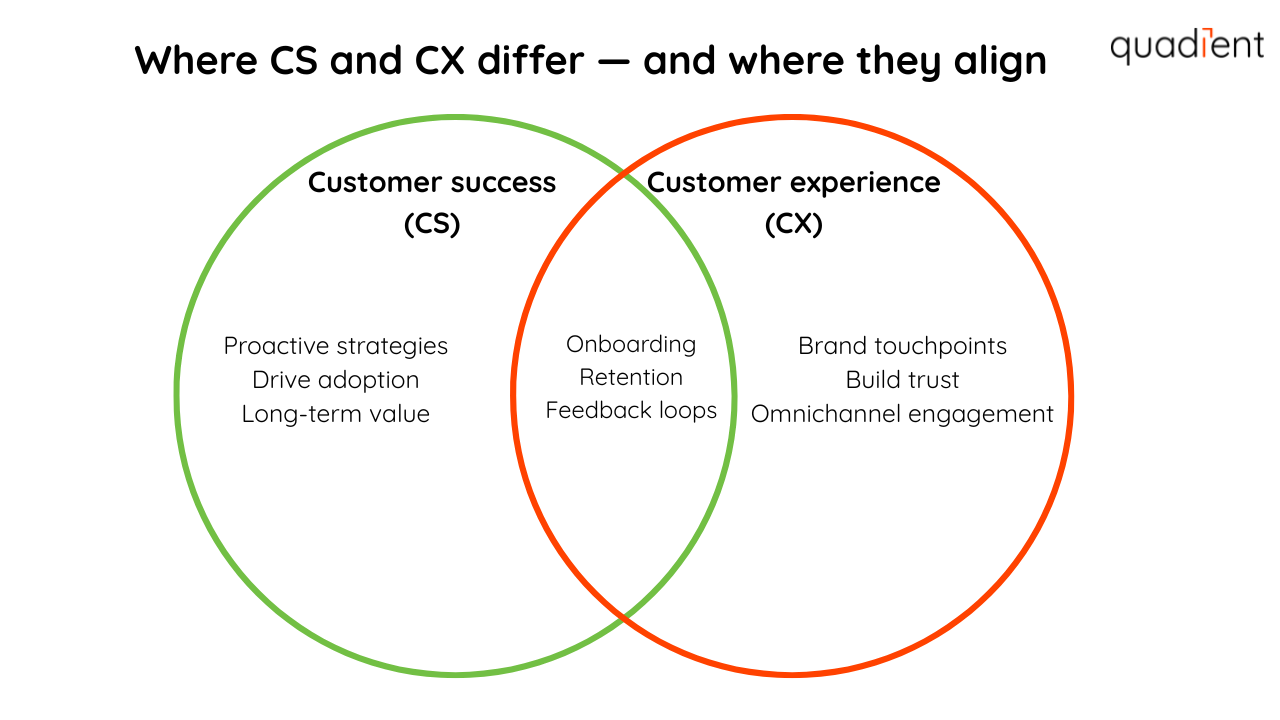
Why alignment matters
Embedding CX into core B2B processes, such as account health tracking and expansion planning, turns insights into action. CS and CX both rely on data, feedback, and collaboration. When teams share CX tools, such as journey maps, data collection tools like intelligent forms, onboarding flows, and performance metrics, they can deliver more unified and effective experiences.
Leading organizations use centralized platforms to bring these functions together. For example, Santander UK streamlined its small business onboarding using dynamic digital forms, reducing completion time to under 15 minutes and cutting total onboarding duration to just two days. This improvement shows how seamless CX and proactive customer success efforts can work together to deliver faster outcomes and stronger first impressions.
Overcoming integration challenges
Many businesses silo CS and CX, resulting in misalignment and inefficiency. But strategic shared tools, goals, and coordinated communication strategies can unify these teams. Companies that invest in technologies such as customer journey mapping and centralized communication systems are better equipped to reduce friction and improve customer retention.
The role of technology
AI and analytics enable personalized interactions, predict churn, and facilitate proactive customer engagement. Centralized platforms provide a unified view of the customer by consolidating communications, feedback, and behavioral data.
Customer communications automation technology enables businesses to manage onboarding, renewals, and support at scale, while omnichannel orchestration ensures consistent, compliant messaging across print, mobile, email, and web channels.
Strengthening strategy across both functions
B2B customer success programs should reflect the complexity of modern sales cycles. Personalized dashboards, CCM-driven insights, and automated communications can guide clients through onboarding and growth.
Similarly, CX strategies should identify and eliminate friction, delivering clarity at every touchpoint. Consistent branding and seamless support across channels reinforce trust and encourage repeat engagement.
Key metrics to monitor include Net Revenue Retention, Customer Health Score, Time-to-Value, NPS, and CES. These help identify strengths, flag issues early, and support continuous improvement.
ROI and performance metrics
The 5 C’s of customer experience are consistency, communication, customer feedback, convenience, and customer-centricity. Each supports customer retention and brand loyalty.
Experience ROI measures how improvements in CX translate into financial return, through retention, loyalty, reduced service costs, and higher lifetime value. For example, if a CX program costs $50,000 and returns $100,000, the ROI is 100%. Some companies report CX ROI as high as 200%.
Customer success ROI measures how well proactive strategies drive long-term customer value. It’s typically assessed using metrics like Net Revenue Retention, Customer Health Score, expansion revenue, and Time-to-Value. Investing in success initiatives helps reduce churn, grow accounts, and increase lifetime value, ultimately boosting ROI.
Conclusion
Customer success and customer experience must operate in sync, especially in complex B2B environments where both results and perceptions drive loyalty. When aligned, they improve retention, reduce churn, and create long-term value. By unifying teams, coordinating communication, and leveraging the correct data and technology, businesses can turn fragmented processes into a competitive advantage.
To learn more about how Quadient Inspire helps businesses deliver consistent, efficient, and customer-centric communications, visit https://www.quadient.com/en/customer-communications/inspire-evolve.




